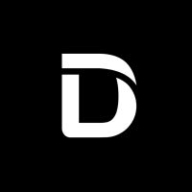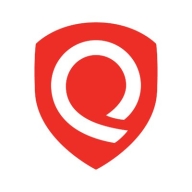

Find out what your peers are saying about Darktrace, Vectra AI, Trend Micro and others in Network Detection and Response (NDR).
| Product | Market Share (%) |
|---|---|
| Darktrace | 22.3% |
| Qualys Multi-Vector EDR | 0.3% |
| Other | 77.4% |

| Company Size | Count |
|---|---|
| Small Business | 44 |
| Midsize Enterprise | 19 |
| Large Enterprise | 29 |
Darktrace is a leading cybersecurity solution that leverages artificial intelligence and machine learning to provide advanced threat detection, response, and risk management capabilities. Many reviewers find Darktrace's AI and machine-learning capabilities to be valuable. They appreciate its ability to detect anomalies and threats that might go unnoticed by traditional security tools. Overall, the general sentiment towards Darktrace from reviewers is positive. Users seem to appreciate its scalability, stability, AI capabilities, visibility, and ease of use.
Darktrace offers a proactive and intelligent approach to cybersecurity. It utilizes AI algorithms to learn and understand the 'pattern of life' for every user and device within a network. This understanding enables it to detect anomalies that could signify a cyber threat, from subtle insider threats to more obvious ransomware attacks.
Its adaptability, autonomous response features, and comprehensive network visibility make it a top-tier solution for different sizes of organizations and across many industries. It was named one of TIME magazine’s ‘Most Influential Companies’ in 2021 and protects over 8,800 organizations globally from advanced cyber threats.
Darktrace Cyber AI Loop
The Darktrace Cyber AI Loop introduces an advanced artificial intelligence-based system for cybersecurity, designed to build a self-improving defense mechanism. This system functions like a closed loop, where each stage feeds information and insights into the next, amplifying the overall effectiveness of the platform.
The key components of the loop are:
Darktrace's AI algorithms can identify threats that traditional security tools might miss. It continuously learns and updates its understanding of what is normal for each environment, ensuring that it can quickly detect and respond to unusual activities that could indicate a breach. Darktrace's Antigena module can autonomously respond to threats in real time. This is particularly crucial in containing fast-moving threats like ransomware, where every second counts.
Darktrace's solution provides unparalleled visibility into all parts of the network, including cloud services, IoT devices, and industrial control systems. This comprehensive coverage ensures that no part of the network is left unprotected. However, while the Darktrace Cyber AI Loop offers a robust solution, it is not a complete cure-all and requires careful implementation and integration with existing security frameworks.Darktrace offers a comprehensive and unified approach to cybersecurity. It provides continuous protection against known and unknown threats, regardless of where they emerge. Darktrace's solutions provide visibility into your cloud infrastructure, continuous monitoring of application usage and communication patterns (e.g., identification of suspicious actions like unauthorized data access), comprehensive email security that goes beyond traditional spam and phishing filters, real-time protection for endpoints, and continuous monitoring of network traffic and device activity.
Darktrace also provides specialized coverage to secure your zero-trust architecture. Identifies compromised identities, unauthorized access attempts, and risky data exfiltration within a least-privilege environment. Finally, it has a dedicated solution for safeguarding industrial control systems and critical infrastructure. Monitors communication patterns, device behavior, and physical access within OT environments, protecting against operational disruptions and cyberattacks.
Qualys Multi-Vector EDR is designed for real-time threat detection and response, offering comprehensive visibility into potential security breaches across endpoints.
This solution integrates seamlessly with other Qualys modules, facilitating automated workflows that streamline incident management and enhance efficiency in monitoring and mitigating cyber threats. With features like real-time monitoring, detailed reporting, and proactive alerting, security teams can quickly identify and address vulnerabilities. While appreciated for its scalability and ease of deployment, users suggest improvements in integration, reporting, and configuration to further enhance its capabilities.
What are the key features of Qualys Multi-Vector EDR?Qualys Multi-Vector EDR is implemented across industries such as finance, healthcare, and retail, where real-time threat detection and automated response are critical. Its ability to integrate with existing systems and provide detailed reporting makes it a valuable asset for enhancing cybersecurity measures in diverse environments.
We monitor all Network Detection and Response (NDR) reviews to prevent fraudulent reviews and keep review quality high. We do not post reviews by company employees or direct competitors. We validate each review for authenticity via cross-reference with LinkedIn, and personal follow-up with the reviewer when necessary.